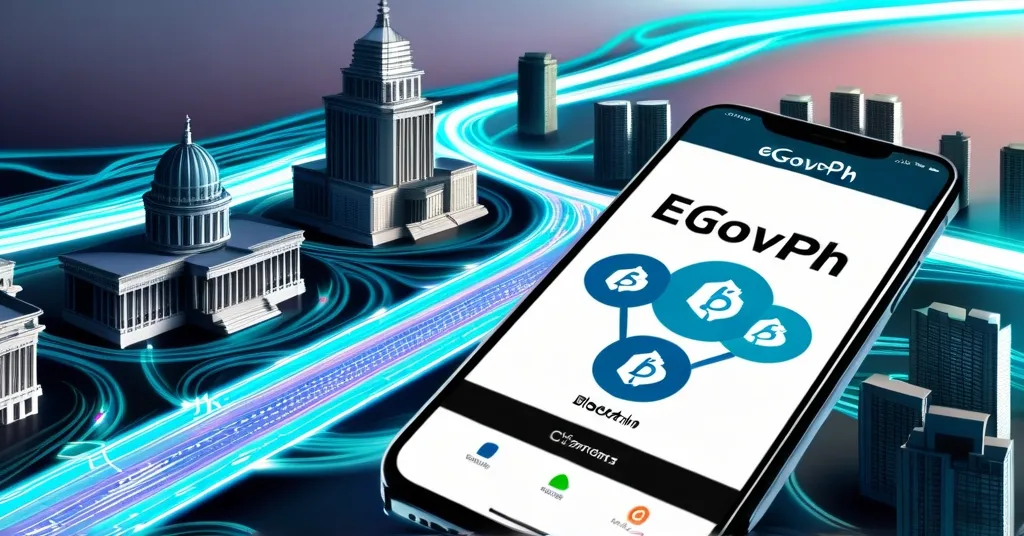Philippine Senate Pushes E-Governance Act to Digitize Government Services

Philippines: E-Governance Act Passage Pushed in Senate
Philippine Senator Alan Peter Cayetano is pushing for the passage of Senate Bill No. 2781, the “E-Governance Act,” to revolutionize government services through digitalization, enhancing efficiency and transparency for citizens and overseas Filipino workers (OFWs).
- E-Governance Act aims to digitalize government services
- Integrated Government Network (IGN) to enhance information exchange
- eGovPH app to consolidate services for citizens and OFWs
- Blockchain integration via eGOVchain initiative to secure public transactions
Senator Cayetano’s advocacy for the E-Governance Act seeks to streamline government operations. The bill proposes the creation of an Integrated Government Network (IGN), a secure system designed to facilitate the seamless exchange of information between government departments. Think of the IGN as the digital highways that will connect government agencies, allowing data to flow like traffic on a well-organized road network.
A key component of the bill is the mandatory integration of government services into the eGovPH app. This app will serve as a one-stop platform where citizens and OFWs can access all government services without the confusion of navigating multiple apps. As Senator Cayetano humorously noted, “The Department of Migrant Workers wants their own app. But if you’re an OFW at the airport dealing with separate apps for Immigration, Migrant Workers, SSS, and others, it becomes more confusing.” It’s like trying to juggle too many balls at once; the eGovPH app aims to simplify the process by consolidating everything into one handy tool.
Each government agency will appoint a Chief Information Officer (CIO) (a fancy title for someone who knows their tech) to oversee the digital transformation, ensuring alignment with national technical standards. Additionally, a Records and Knowledge Management Information System will be established to enhance document and service management across government entities.
The Department of Information and Communications Technology (DICT) has been instrumental in these efforts, having developed an e-governance master plan. However, as Senator Cayetano pointed out, “Under existing law, the DICT cannot really dictate or require government departments to integrate.” The E-Governance Act addresses this by empowering the DICT to enforce compliance among agencies, ensuring a unified approach to digitalization.
In a pioneering move, the Philippine government launched the eGOVchain initiative in 2024, leveraging blockchain technology to enhance the security and efficiency of public transactions. Blockchain can be thought of as a secure, tamper-proof digital ledger that records transactions. DICT Undersecretary for e-Government David L. Almirol Jr. emphasized its importance, stating:
“Blockchain’s decentralized and immutable nature ensures that data entered cannot be altered without detection, making it a valuable tool for reducing corruption and ensuring accountability.”
The integration of blockchain into platforms like the Digital National ID, eGovDX, and the eGovPH Super App highlights the government’s commitment to leveraging cutting-edge technology for better governance. Public-private partnerships are crucial for tackling integration challenges and ensuring the success of these initiatives.
The bill is poised for amendments and includes the establishment of an E-Governance Academy. This academy will be vital in supporting the transition to digital governance, providing training and resources to equip government officials to navigate the new digital landscape.
The E-Governance Act represents a significant step towards a more digital Philippines. It promises to streamline services, enhance transparency, and empower citizens and OFWs with easier access to essential government functions. Senator Cayetano’s vision is clear: “This is not just a technological shift but an opportunity to deliver more responsive governance.”
Key Takeaways and Questions
- What is the main goal of the E-Governance Act?
The main goal is to digitalize government services under a single, integrated framework to improve interoperability, transparency, and efficiency.
- How does the E-Governance Act plan to streamline services for OFWs?
It aims to consolidate government services into the eGovPH app, eliminating the need for multiple agency-specific platforms, thus simplifying the process for OFWs.
- What is the role of the Integrated Government Network (IGN)?
The IGN is intended to facilitate the secure exchange of information across government departments, enhancing coordination and efficiency.
- How does the bill address the challenges faced by the DICT?
The bill grants the DICT the authority to enforce digital integration and compliance among government agencies, addressing the current limitation where the DICT cannot mandate integration.
- What is the significance of the eGOVchain initiative?
The eGOVchain initiative introduces blockchain technology to secure public transactions and streamline processes, aiming to reduce corruption and enhance accountability.
- How will Chief Information Officers (CIOs) contribute to the implementation of the bill?
CIOs will oversee digitalization efforts within their respective agencies, ensuring alignment with national standards and addressing potential challenges.
- What are the next steps for the E-Governance Act?
The bill will undergo amendments and includes the establishment of an E-Governance Academy to support the transition to digital governance.
- How does the government plan to ensure the security and privacy of user data within the eGovPH Super App?
Advanced encryption and multi-factor authentication will be used to safeguard user data and privacy within the eGovPH Super App.



